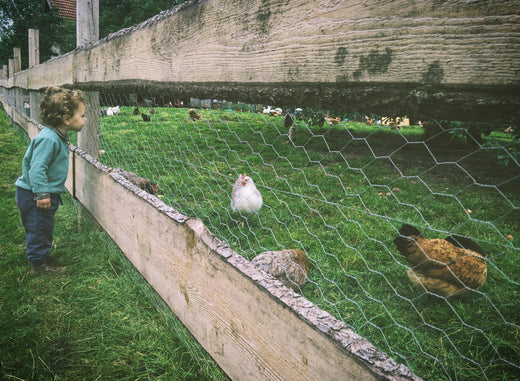How Dangerous is Bird Flu?

The H5N1 virus, also known as Bird flu or Avian Flu, was first identified in 1996 in geese in southern China. Since then, the disease reappeared yearly in autumn and faded in the summer, spreading into other countries in wild and domesticated species. For the first time in 2022, the disease lingered through the summer and caused massive losses in the poultry industry around the world.
The World Organization for Animal Health (WOAH) has been keeping track of the outbreaks, and the effects are not only in domesticated birds. In the US, over 140 species of wild birds (out of 1,000 total native species) have contracted the bird flu, and overseas it has decimated populations of seabirds. Mammals such as otters, seals and mink have died from eating infected or dead wild birds or come into contact with droppings. Red foxes, grizzly bears, raccoons and skunks have also died from it. Officials are not sure whether all the infections and deaths are from the birds or the flu is being passed within the mammal community.
Does it cross over to people? The World Health Organization (WHO) reports that “From 1 January 2003 to 21 December 2023, a total of 248 cases of human infection with avian influenza A(H5N1) virus were reported from four countries within the Western Pacific Region... Of these cases, 139 were fatal. “ (Avian Influenza) This results in a case fatality rate (CFR) of 56% (compared to about 1.1 percent for Americans infected with COVID-19); in 1997, following an outbreak in poultry in Asia, avian flu killed half of the 860 people it infected. (Will avian flu be the next human pandemic?) Many researchers are currently keeping close watch on the virus to see that it is not mutating into a form that can be passed from human to human.
Just like human influenza strains, avian influenza mutates. This is why there are varieties like “H1N1”, “H5N1” and others. The “H” protein, which stands for HA or hemagglutinin, enables the virus to enter the host cells. The “N” protein, which stands for NA or neuraminidase, enables the virus to leave, or “shed,” making it possible for the virus to spread. These are the parts that change. (H7N9 bird flu: What you should know) Another Avian Flu, H7N9, is asymptomatic in birds but can be very devastating to humans that contract it. It was first discovered in 2013 in China and since then has reappeared in poultry markets around the globe through 2017. It has a mortality rate in humans of about 40%, affecting men more often than women.
How can bird flu be stopped? As we know from the coronavirus, it’s difficult to eradicate a virus through vaccination, and in the case of the poultry industry, vaccination must be done carefully. Vaccinated poultry cannot be sold in other countries, so only a few countries including Russia, China and Egypt have vaccinated their flocks in the past three years. (How likely is a human bird flu pandemic?) All other countries try to keep sick and dying birds separate, and in extreme cases, exterminate when flocks are exposed. The losses have hit farmers very hard, in addition to higher costs for feed and other inputs, so that translates into higher cost and scarcity of poultry and eggs for consumers in stores.
According to the WHO, vaccines for use in humans against H5N1 infection have been developed, but have not been widely used. (How likely is a human bird flu pandemic?) If a virus does manage to mutate and infect among humans, at the moment there is not enough stock in vaccines or ability to manufacture them to innoculate the world within one year. Therefore the measures we’ve learned to take against the spread of COVID-19 could be effective in keeping the virus at bay: sanitizing hands and surfaces and protecting your respiratory system with social distancing, masks and proper hydration and rest. The equipment that helps to reduce the SARS-CoV-2 virus, such as bipolar ionizers, UV lights and HEPA filters, will also be likely be effective against the H5N1 virus, because as a respiratory virus, it can spread through the air on droplets and these devices can filter or kill the virus.
Unfortunately, bird flu has spread to dairy farms in the past year. At least 875 herds across 16 states have tested positive, and it’s not clear what initiated the cases. It could have been an infected wild bird that first introduced the virus to a cow in northern Texas, where the initial cases were reported, but then transmission from cow to cow among the herd and transport of cattle to other states was not monitored, and the cases quickly spread. In July 2024, the bird flu spread from dairies in Colorado to poultry farms, and the workers hired to “cull” (pick out the infected/dead birds) were not protected. (How America lost control of the bird flu and raised the risk of another pandemic)
Even people who have no contact with dairy or poultry farms (outside of consuming milk, beef, chicken and eggs) are affected, because their pets may come into contact with dead birds or bird poop outdoors. There have been a few cases of cats and dogs dying from bird flu, with cats seeming to be more susceptible. It’s recommended to supervise pets outdoors to keep them away from wild birds (dead or alive) and rodents, especially if you live on a farm or have backyard poultry. In addition, don’t give them raw food or unpasterized milk. (Bird flu Q&A: What to know to help protect yourself and your pets) Sadly, wild cats are also susceptible, as a Washington state animal sanctuary lost 20 big cats including cougars, bobcats, lynxes, and even a tiger, to bird flu in December 2024. (Bird flu kills 20 big cats in Washington state sanctuary)
Specific to avoiding bird flu, the CDC recommends:
- Avoid direct contact with sick or dead wild birds, poultry, and other animals
- Do not touch surfaces or materials (e.g., animal litter or bedding material) contaminated with saliva, mucous, or animal feces from wild or domestic birds or other animals with confirmed or suspected avian bird influenza A virus infection. (wash hands after filling the bird feeder!)
- Do not touch or consume raw milk or raw milk products
- Wear protective clothing (masks and outer garments) when working with poultry
- Cook poultry and eggs to an internal temperature of 165˚F to kill bacteria and viruses, including avian influenza A viruses.
- Cook all beef products thoroughly before eating: ground beef should reach a safe internal temperature of 160°F and whole cuts of beef should reach 145°F then rest for 3 minutes, to kill bacteria and viruses, including avian influenza A viruses.
- Do not visit poultry farms, bird markets, or other places where live poultry are raised, kept, or sold, if possible, and don’t visit dairy farms with sick cows.
- Visit a doctor if you become sick during or after travel.
With increasing prices of chicken and eggs in the supermarket, many people are starting their own backyard flocks. Raising chickens can be a rewarding family experience, too. These are typically “free range” or housed in coops. Unfortunately, the coops don’t adequately separate chickens from wild birds, which can spread bird flu. Although backyard chicken farmers are at much greater risk of getting sick from salmonella and campylobacter than bird flu, increased contact with live poultry puts more humans at risk from bird flu. In this age of inflation and sporadic shortages, it would be a sad development if families are prevented from raising their own food because of yet another virus outbreak.






